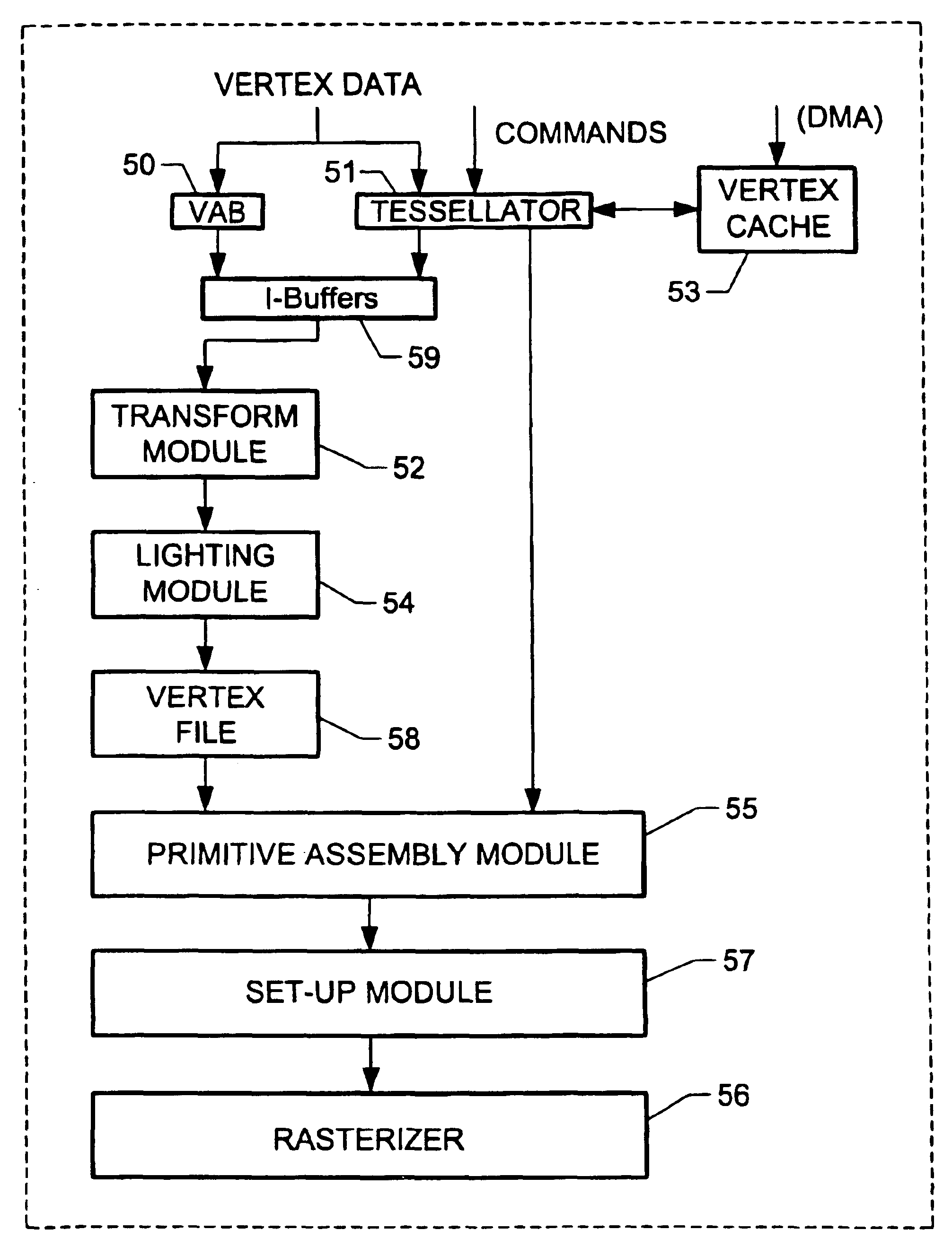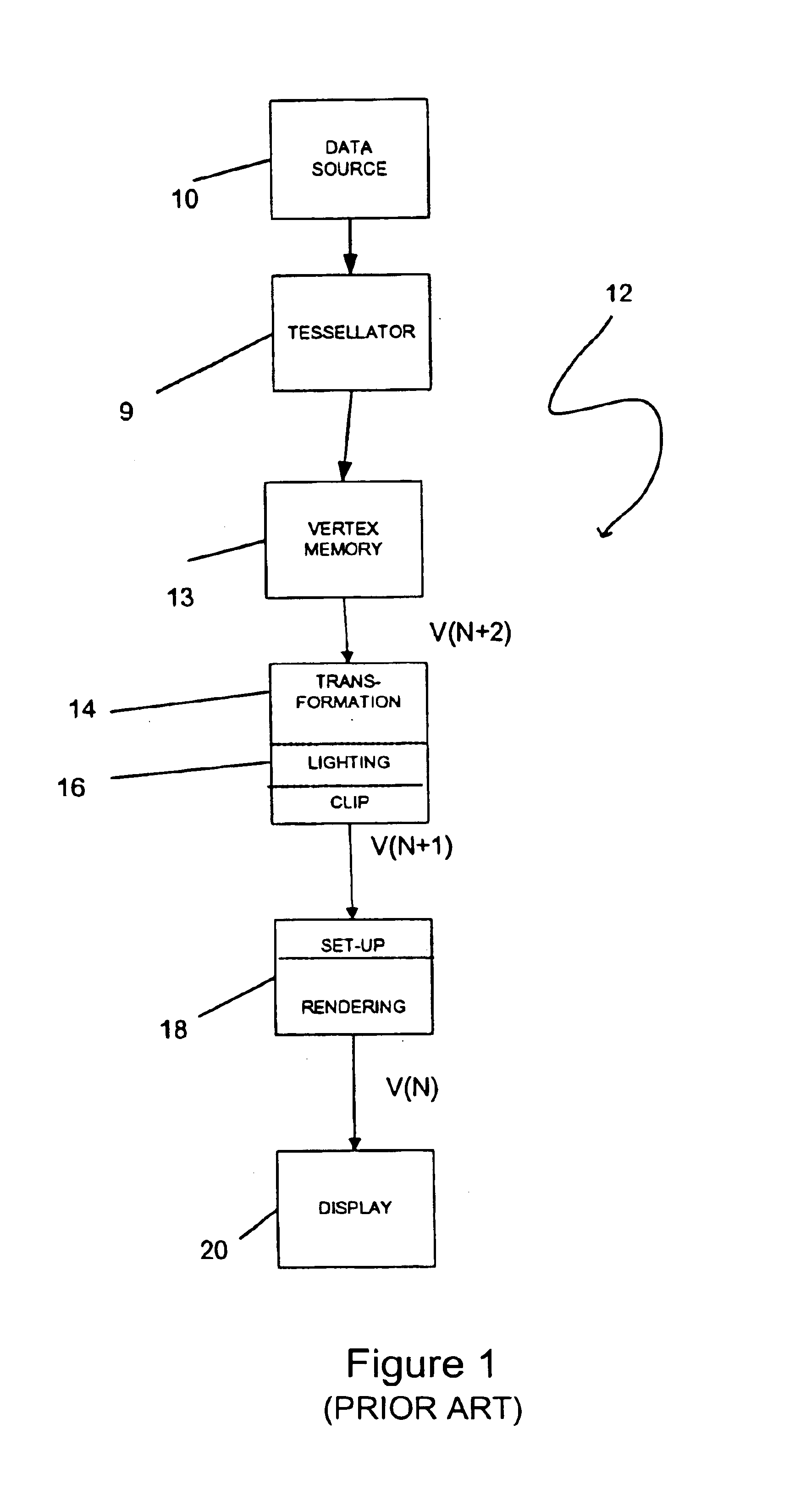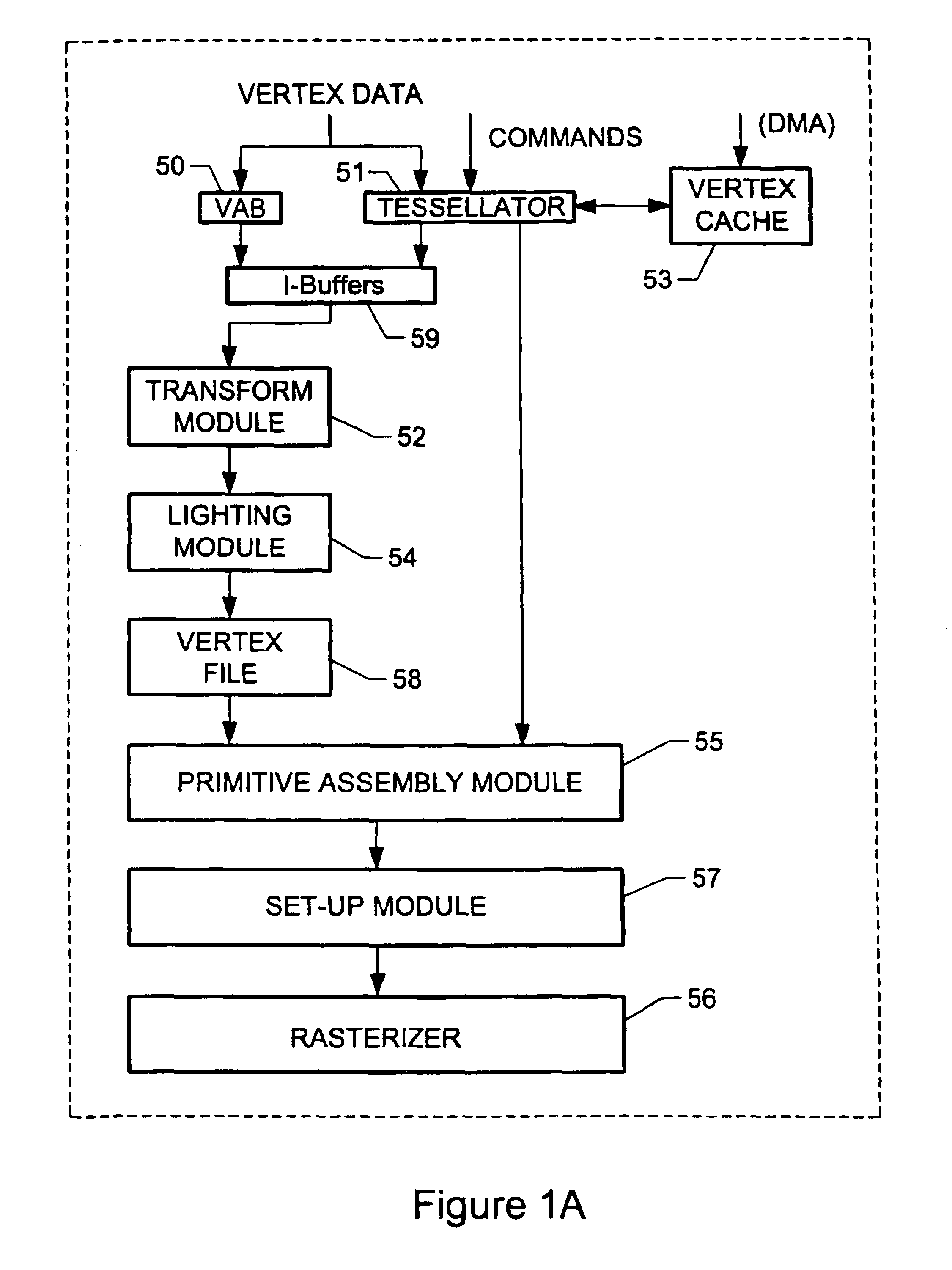Integrated tessellator in a graphics processing unit
a graphics processing unit and integrated technology, applied in the field of graphics pipeline systems, can solve the problems of computational intensive process of rendering and displaying a three-dimensional object, limited computations needed to realistically render and display a three-dimensional graphical object, and limited true realistic display of three-dimensional objects, so as to achieve the effect of improving quality and improving performan
- Summary
- Abstract
- Description
- Claims
- Application Information
AI Technical Summary
Benefits of technology
Problems solved by technology
Method used
Image
Examples
Embodiment Construction
[0075]FIG. 1 shows the prior art. FIG. 1A is a flow diagram illustrating the various components of one embodiment of the present invention. FIG. 1A illustrates a single-chip implementation of a graphics processing pipeline which incorporates a tessellation module 51. As shown, the tessellation module 51 receives as input data, i.e. vertex data, geometric descriptions, etc., and commands. Further, a vertex cache 53 populated using direct memory access (DMA) capabilities is provided which also feeds the tessellation module 51. When the tessellation module 51 is enabled, tessellated data is outputted from the tessellation module 51 to I-Buffers 59 which also receive data, i.e. vertex data, from a vertex attribute buffer (VAB) 50. Such I-Buffers 59 work to feed a transform module 52 and lighting module 54. The transform and lighting modules subsequently feed output to a vertex file 58. Also shown in FIG. 1A is a primitive assembly module 55 which communicates with the vertex file 58 and...
PUM
 Login to View More
Login to View More Abstract
Description
Claims
Application Information
 Login to View More
Login to View More - R&D
- Intellectual Property
- Life Sciences
- Materials
- Tech Scout
- Unparalleled Data Quality
- Higher Quality Content
- 60% Fewer Hallucinations
Browse by: Latest US Patents, China's latest patents, Technical Efficacy Thesaurus, Application Domain, Technology Topic, Popular Technical Reports.
© 2025 PatSnap. All rights reserved.Legal|Privacy policy|Modern Slavery Act Transparency Statement|Sitemap|About US| Contact US: help@patsnap.com



